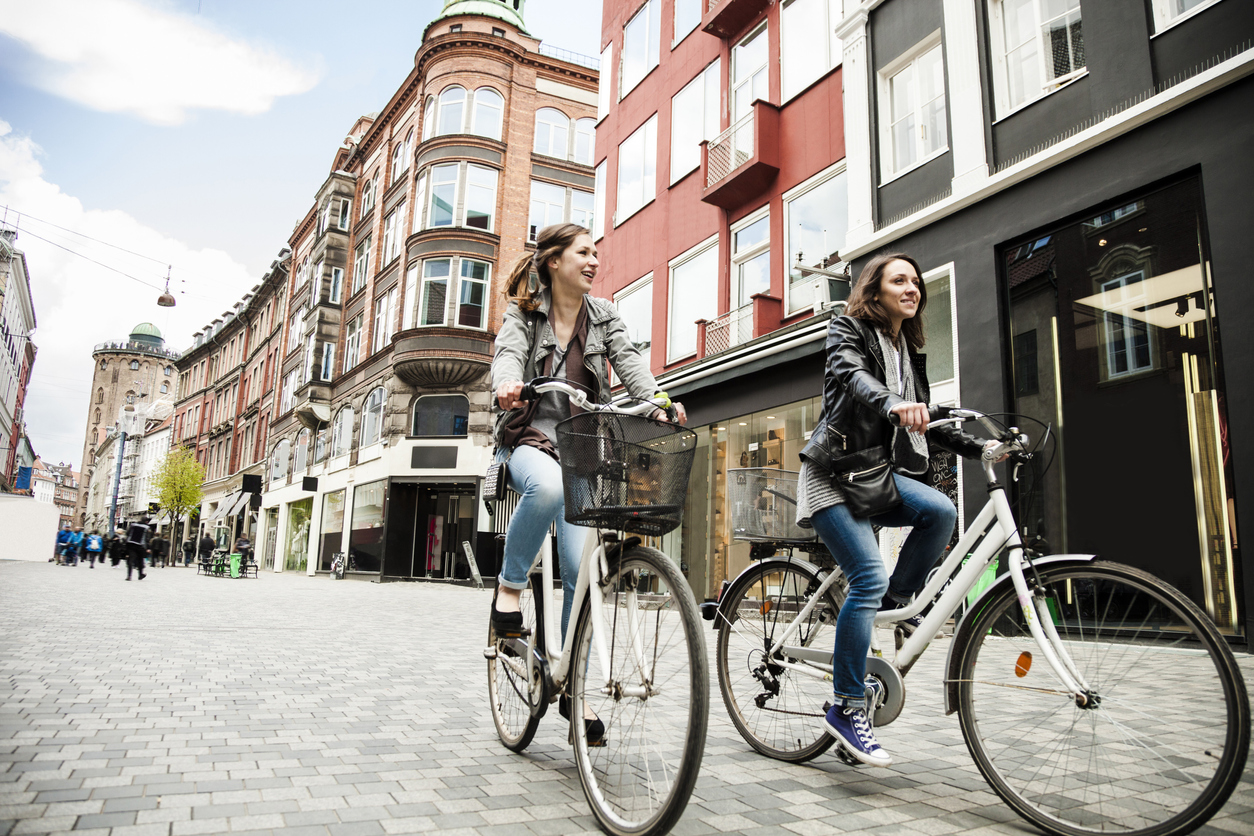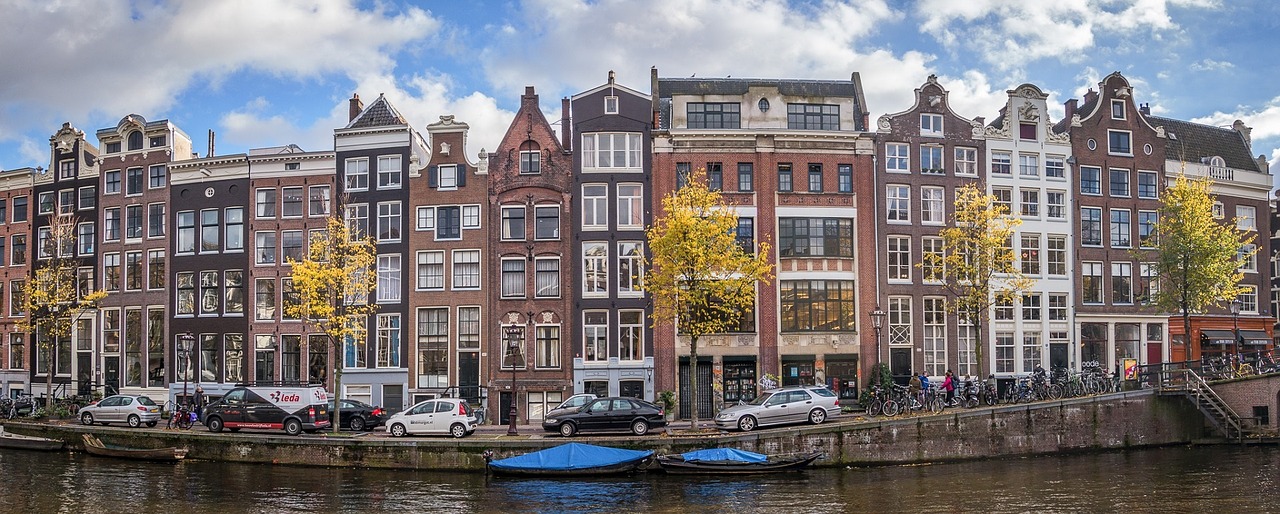As urbanisation and industrial development continue to cause irreversible damage to the environment, major cities across the world are working hard to protect the planet. The world becomes more polluted with each passing day, and nations must strive to be more responsible towards the planet. A few cities have done exceptionally well when it comes to sustained environmental efforts. These sustainable cities work to eliminate their overall carbon footprint while also investing in several eco-friendly projects that help humans coexist in harmony with nature.
These cities ensure that human intervention is kept to a minimum, allowing the natural environment to flourish. Green, sustainable cities see the government work with citizens to ensure their eco-friendly goals are achieved.
Here Are 12 Of The Most Sustainable Cities In The World
1. Copenhagen, Denmark—Europe’s Green Capital

Copenhagen is considered one of the most sustainable cities in Europe and is also one of the most bike-friendly cities in the world. Nearly 50 percent of citizens in Copenhagen ride a bike to work or school. Since 1995, Copenhagen has successfully been able to reduce its CO2 emissions by using alternative energy and hopes to become the world’s first carbon-neutral capital by 2025. Since 2010, Copenhagen has been integrating green roofs into its infrastructure. They also have an array of wind farms. The city aims to use 100 percent renewable energy in the energy and transport sectors by 2050.
2. Singapore—The Garden City

Ever since its independence in 1965, Singapore has consistently prioritised sustainability. Known as the Garden City for its city-wide greenery, Singapore’s government has made sustained efforts to maintain green spaces amid all the urbanisation. 10 percent of Singapore’s land has been set aside for parks and nature reserves, and the government is committed to making at least 80 percent of all its buildings green by 2030. Singapore also houses the largest food waste processing facility in Asia which uses microorganisms to break down biodegradable material in fertilizer and power.
3. San Francisco, USA—A Trailblazer In Waste Management

San Francisco is the most sustainable, eco-friendly city in the USA, according to the extensive Siemens Green City Index. The city has made commendable efforts in recycling and waste management. San Francisco was the first city in the USA to make it mandatory for all residents and businesses to separate trash from compost and recyclables. 77 percent of the waste in San Francisco gets recycled, making it the city with the highest recycling rate in the USA. It was also the first city in the country to ban plastic shopping bags all the way back in 2007.
4. Amsterdam, Netherlands—The City Of Bikes

Amsterdam has more bikes than people. The city relentlessly champions green living, encouraging all citizens to use bikes and electric vehicles to reduce their carbon footprint. The city has 300 charging stations spread across it. Amsterdam also ensures that local farmers get all the support they need so that the city can consume organic, homegrown food. Citizens are increasingly using clothes made from eco-friendly materials and manufacturing processes in Amsterdam steer clear of poisonous dyes or agents that could contaminate water.
5. Stockholm, Sweden—Efficient And Eco-Friendly Systems In Place

Stockholm was the first EU city that won the European Green Capital Award in 2010. The city has an efficient system that runs without using up all its fossil fuel reserves. Presently, Stockholm has biofuel conversion plants that take sewage to produce biofuel from them. The city also uses waste heat produced by data centers, shops, and stadiums that are used to provide heating to the residents of Stockholm. By 2050, Stockholm hopes to be completely fossil-fuel-free.
6. Vancouver, Canada—The Lowest Carbon Emissions In North America

Vancouver is one of the major cities in North America with the least amount of carbon emissions. Efforts to achieve this status began as early as 2010 when Vancouver began supporting cyclists and went on to build separate lanes for them. The city continues to increase the number of charging ports to encourage citizens to use electric vehicles. Multiple waste management projects exist in Vancouver that serve to make the city free of waste and contaminants. The government has also formed a Green City Action Team (GCAT) that will strive to make Vancouver the greenest city in the future years.
7. Curitiba, Brazil—A City Utilizing the Power of Recycling

Curitiba is known as the Green Capital of Brazil. This sustainable city recycles 70 percent of its waste to generate reusable energy or products. It has an efficient public transportation system that assists commuters to travel around the city without depending on their personal vehicles, thereby reducing their carbon footprint. The city has four forests and 16 parks in the urban area. To ensure the city stays clean, authorities have employed an incentive program that offers tokens, snacks, sweets, and sometimes even cash in exchange for recyclable items. While helping keep the city clean, this initiative also assists the underprivileged by giving them food.
8. Helsinki, Finland—Promotes Ecotourism

The city of Helsinki places a huge emphasis on sustainability. Since tourism is one of the biggest contributors to the economy, the city has made sure that 75 percent of hotel rooms have been certified as environmentally friendly. Within Helsinki is Viikki a green district. The residential area is 23 hectares and uses solar and wind energy systems. It also houses the first-ever apartment building to use solar electricity in Finland.
9. Cape Town, South Africa—Focusing On Sustainability Since 2008

Cape Town started using wind farms for energy in 2008. Additionally, the city aims to get 10 percent of all its energy from renewable resources. Citizens are known to use bikes to get around and have also taken to using solar panels to power their homes. Cape Town has invested in multiple safe-cycle routes and also allows bikes on buses for free to help people get around without a car.
10. Portland, Oregon—Efficient Waste Management

Portland has consistently made remarkable changes to ensure it stays eco-friendly. 25 percent of workers in the city commute by carpool, public transportation, or by bike. The number of vehicles on the road has significantly reduced because of this. There are nearly 250 miles of bike paths around the city. Eight percent of the population uses cycling as the main method of transportation. Waste management is also a priority in Portland, it produces 2,434,840 tonnes of waste and recycles 1,235,924 tonnes of it, which is astonishing for a major city. The city also uses 33 percent of renewable energy and has banned plastic bags.
11. Berlin, Germany—Growing Organic Food Is A Tradition

Berlin started valuing green spaces after WW1, which is also when they started to grow their own food, a tradition that has passed through generations. The city promotes the use of electric vehicles and has 400 charging points across the city. Citizens themselves have started sharing vehicles instead of using their own as they’ve realised the impact it has on the environment.
12. Accra, Ghana—Relies On Hydropower For Its Energy Needs

The capital of Ghana is unique in its approach to environmental governance, especially since Africa has been one of the fastest urbanising continents for decades. The city has policies in place that manage air quality, sanitation, and renewable energy. 74 percent of its energy comes from hydropower. Despite a large financial divide existing in the country, the city encourages organic farmers’ markets in its bid to support a shift towards environmentalism.
These Cities Are Reminders To The Rest Of The World To Adopt Eco-Friendly Practices
It is easy for cities to get carried away with development and urbanisation at the cost of the environment. However, these sustainable cities are examples of how good governance ensures sustainable development by encouraging citizens to be more eco-conscious. With efficient policies in place, cities have the ability to drastically reduce their carbon footprint by using alternative sources of energy. The climate crisis is real and governments across the world must be more mindful about the kind of policies they implement.
Also Read: ‘Green’ Countries Striving For Sustainable Living


